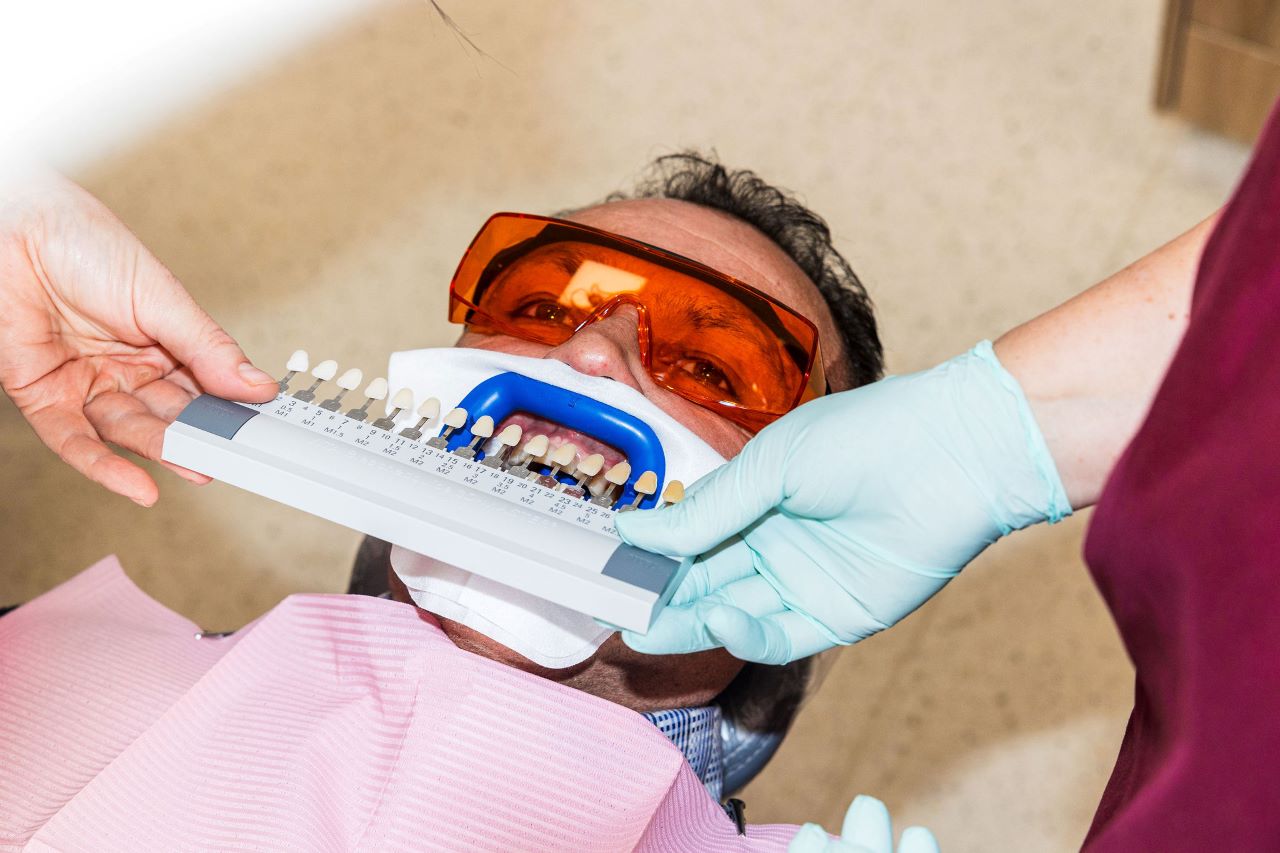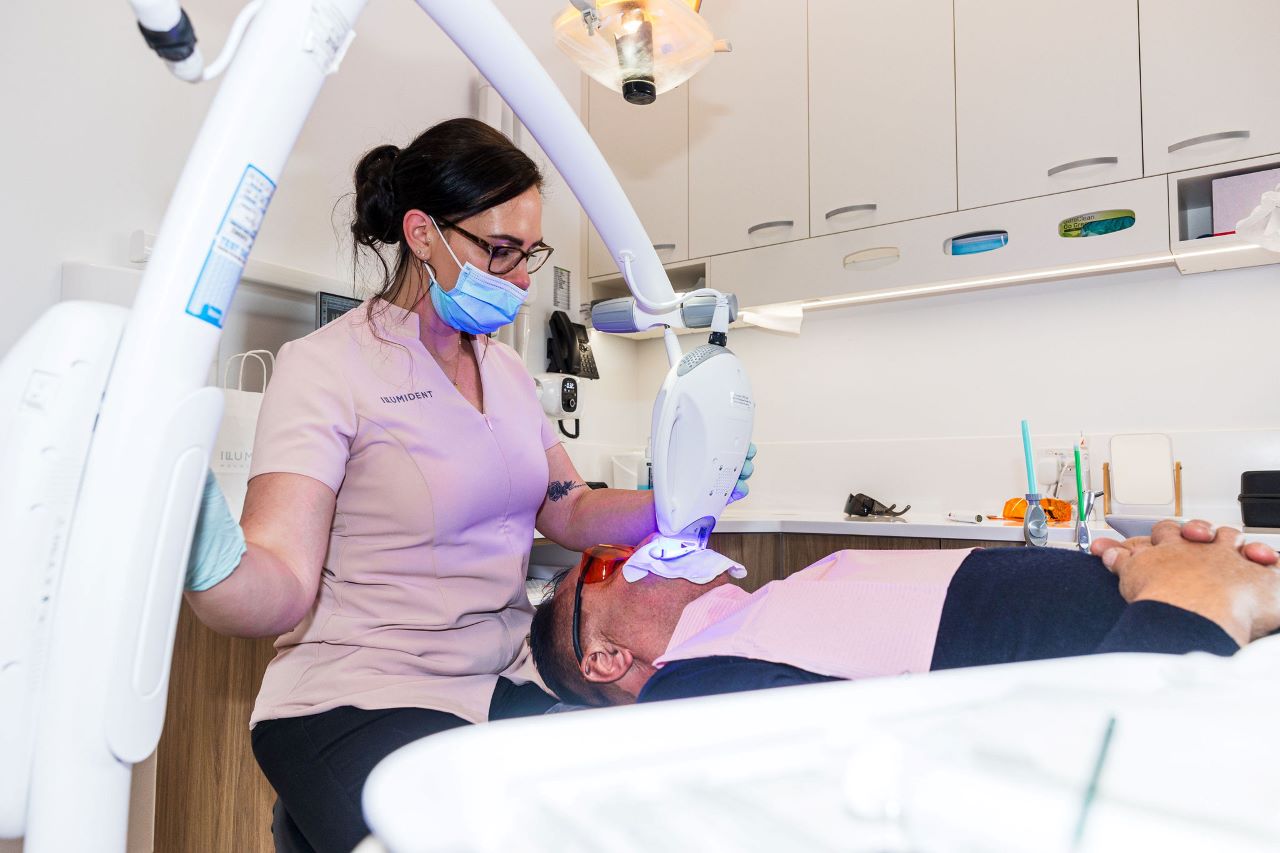Invisalign is a very popular teeth straightening treatment for people in Mount Gambier or Port Fairy who want to achieve a picture-perfect smile — and it’s clear to see why.
With its virtually invisible, removable aligner trays, Invisalign offers a much more discreet, comfortable and flexible way to straighten your teeth than traditional braces.
But how does Invisalign work exactly?
And will it be effective for your smile?
As certified Invisalign Go providers, we know this treatment like the back of our hand. So, we’re here to help you get a better understanding of how Invisalign works, how long treatment can take and the different types of dental issues it can fix.
How does Invisalign work?
Just like traditional braces, Invisalign works by using gentle pressure to gradually move your teeth into their ideal position. But the beauty of the Invisalign system is that it uses a series of removable clear aligner trays that are changed every few weeks, rather than fixed metal wires and brackets.
Before you even pop in your first set of aligners, your dentist will use special software to plan out your entire treatment and customise each set of your aligner trays. With Invisalign technology, each tooth is moved individually, rather than receiving the same amount of pressure across all teeth. This gives your dentist more precise control over the movement of your teeth for more predictable results.
At the start of your treatment, you’ll receive the first few sets of your customised aligner trays. Your dentist will give you clear instructions on which trays you need to use first and when to replace them with the next set. Since the aligners can be changed without your dentist’s assistance, you’ll be in charge of replacing your aligners at the right time to keep your treatment on track. But don’t worry, you’re not on your own! You’ll still visit your dentist in-person every 3 to 6 weeks so they can check in on your progress, answer your questions and provide you with your updated sets of aligners as needed.
Although Invisalign aligners can be removed when eating, drinking, brushing or flossing (or for that special event), you must wear your trays for at least 20 to 22 hours per day for the treatment to be effective.

What is the process for getting Invisalign?
At our dental clinic in Mount Gambier or Port Fairy, getting started with your Invisalign treatment is as easy as 1, 2, 3…
- Step 1: Come in for your Invisalign consultation
At this appointment, we will assess your smile, determine whether Invisalign Go is right for you and book you in for your oral scan appointment.
- Step 2: Scanning and planning
Next, we take scans of your mouth, discuss how you’d like your new smile to look and put together your personalised treatment plan with all the costs clearly outlined. Here is where we use the special Invisalign software to plan out the movement of your teeth and customise your aligner trays.
- Step 3: Let the smile transformation begin!
You’ll receive your custom aligners and start wearing them — but first, we’ll talk you through how to use them and make sure they fit correctly. Over the coming months, we’ll see you every 3 to 6 weeks to monitor your progress.

How long does Invisalign take to work?
On average, Invisalign Go treatment time can take anywhere from 4 to 6 months up to 12 months.
When it comes to how quickly Invisalign works, this largely depends on the complexity of your case and how much your teeth need to move. As such, minor misalignment cases will take less time while more complex cases will require a longer treatment time to work effectively.
Is Invisalign right for you?
The easiest way to find out is to come in for your FREE Invisalign consultation — call us to book in a time that suits.

What types of dental issues can Invisalign fix?
Invisalign is great at straightening smiles — but that’s not all it can do! This powerful clear aligner system can also be used to effectively treat a number of dental concerns. Let’s explore the various issues that can be fixed with Invisalign below.
Overcrowded or crooked teeth
Whether it’s genetics or jaw size, sometimes, our mouths simply don’t have enough room to accommodate all of our teeth. And as our teeth fight for space, they can become crooked and start overlapping one another. This issue is known as overcrowded teeth or overcrowding. When this happens, it can be very difficult to keep your teeth clean, leading to a build-up of bacteria and plaque which can cause cavities and gum disease.
Overcrowded and crooked teeth are a very common issue we see at our dental practices. But the good news is that it can be effectively treated with Invisalign.

Gapped teeth
Gapped teeth (also known as spacing or diastema) occur when there is extra space between neighbouring teeth. Teeth spacing can be caused by tooth loss, tooth movement or even just your biological makeup — for example, you may have naturally smaller-than-average teeth or a bigger than average jaw. The concern with gapped teeth is that it’s easier for food particles to get stuck between the teeth, leaving you at risk of tooth decay.
Invisalign works on gapped teeth by gradually moving the teeth closer together with each new set of aligner trays, helping to close the gaps.

Overbite
An overbite is where the upper teeth stick out and overlap the lower teeth. While a slight overbite is normal, a more pronounced overbite can cause a number of issues. Not only can it affect how you look, speak and eat, but it can also cause your lower teeth to become worn down and lead to serious jaw issues, jaw pain and headaches.
So, does Invisalign work for overbites? It sure does! Although bite issues such as overbites, underbites, crossbites and open bites are considered to be more complex, they can be effectively treated with Invisalign. In bite correction cases, Invisalign attachments will often be used as an additional measure to help guide the jaw and bite back into alignment.

An underbite is where the lower jaw protrudes forwards and the lower teeth overlap the upper teeth. Like an overbite, an underbite can cause some serious oral health issues if left untreated.

A crossbite is where some of the upper teeth rest inside the lower teeth when the mouth is closed. It can impact the teeth at the front or the back of your mouth, or both. Like other bite issues, a crossbite can leave you more susceptible to serious dental problems, such as tooth decay, worn down tooth enamel, gum disease and jaw pain.

Open bite
An open bite is where the upper teeth and lower teeth don’t meet or overlap when the mouth is closed, leaving an open space between them. Open bites can be caused by genetics or skeletal problems, TMJ disorders, tongue thrusting or even prolonged thumb-sucking or sucking of another object like a dummy or pencil.
This type of bite issue is rare and can be more complex to treat, but it is possible with Invisalign. However, in more severe cases, your dentist may recommend braces as a more suitable dental treatment.

How do I know if I’m a good candidate for Invisalign?
The easiest way to determine whether Invisalign is right for you is to come in and see our Mount Gambier and Port Fairy dentists dentist for your FREE consultation. During the consultation, we will take a look at your teeth and gums and assess whether the Invisalign Go treatment is a good fit for you. Ready to book in? Just call us at our Mount Gambier or Port Fairy dental practice to find a time that suits.




.webp)






.svg)














